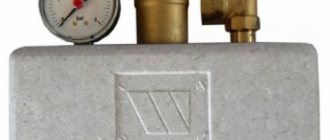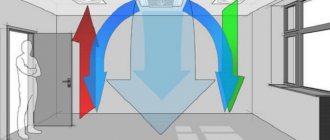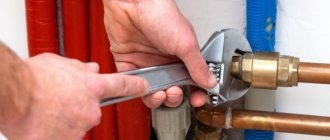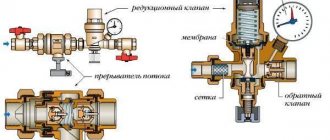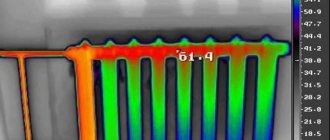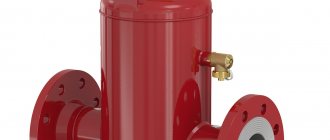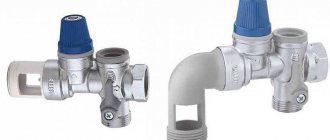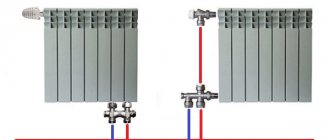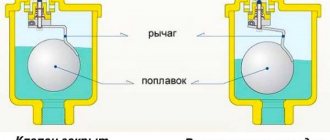Reasons for heating heating
There are several reasons for the appearance of air in the heating system:
- the content of dissolved oxygen in water heating pipes, which, when heated, is released in the form of microbubbles, which subsequently form an air plug;
- supply of media too quickly when filling the system, as a result, the air does not have time to bleed;
- air entering the pipes as a result of media leakage (for example, loose connections);
- use of pipes with oxygen-permeable walls in heating;
- the appearance of air jams as a result of improper installation of the heating system and after repairs.
What to do if the heating system is affected by one of the listed troubles? Of course, bleed the air. To do this, an air vent is cut into the system. Let us further understand what an automatic type device is.
Why does air appear in the heating system?
To relieve air accumulations in the pipe system, both inside the house and in the supply system, it is planned to install specialized taps - air vents.
Heat pipes can become airborne due to the following key points:
- When quickly filling a pipe system with water. Air collects in high places. Therefore, it is necessary that the process proceed slowly, the make-up entry point is located at the bottom, and the air outlet is at the very top of the system, usually in the attic.
- Increased solubility of gases in the coolant as its temperature increases. To feed large volumes of district or main heating networks, it is recommended to deaerate water in special bubbling-type devices. When the water temperature reaches 104 C, oxygen from the water escapes into the atmosphere through the deaeration column.
- In the process of carrying out repair and restoration work related to the drainage of coolant from a section of the network.
- As a result of corrosion processes, hydrogen is released on the internal surfaces of steel pipes, which gradually accumulates in heating networks.
- If the integrity of the heating system is compromised.
Device
The design of the automatic air vent is enclosed in a metal case (bronze, brass, stainless steel), at the bottom of which there is a connecting pipe. The body is sealed and can be cylindrical or cone-shaped. In our country, we have established the production of air vents with external connecting threads 1/2” (DN15) and ¾” (DN 20), in rare cases you can find 3/8”. Inside the barrel there is a float made of polymer material or stainless steel. Through the rocker arm (lever), the float is combined with a spool (spring-loaded drain valve), on the fitting of which a locking cap is placed. In general, the part looks like this:
Principle of operation
The automatic air vent is designed to operate without intervention from the user of the heating system. The operating algorithm of the device is simple:
- In normal condition, the air vent housing is filled with a carrier that pushes the float upward. Thus, the air vent remains closed.
- When air enters, the coolant level drops, and with it the float.
- Having reached a critical point, the float uses a lever to open the drain valve.
- Under the pressure of the water, the air comes out, and water takes its place again, again raising the float up.
- The valve closes.
The work flow looks like this:
Important! An automatic air vent will serve for the benefit of the normal functioning of the heating system at temperatures from -10C to +120C. You should not think that once you install the device, you can forever forget about it and the problems it solves. Like any other device, the air vent requires care, preventive inspection and cleaning. When circulating low-quality coolant in pipes, these actions must be performed regularly. For reliable uninterrupted operation of the device, it needs to be under hydrostatic pressure, and this is only possible if the requirements for operating pressure in the entire heating system are met.
How does an automatic air vent work?
When water props up the float from below, it pushes the rubber gasket and the water pressure presses the gasket into the valve body. This way the hole is closed. When the water leaves, the float sinks and pulls the rubber gasket along with it, the hole for air inlet and outlet opens.
During operation, the automatic air bleeder spits water. Why is this happening? Because air bubbles hit the float mechanism from below quite sharply and this causes a pulsed operation of the air vent. To prevent the air vent from splashing with dirty water, a thread with a diameter of 1/4 to 1/2 is provided at its outlet (depending on the model of the air vent valve RACI, ARI, Unirain,
This video shows how the RACI vent valve works
Device options
There are three types of automatic air vents: corner type, straight type and radiator type. External differences and scope of application do not in any way affect the operating principle of the devices. Let's look at the features of each modification.
Direct air vent
Direct air vent
The most common type is with a straight connection pipe. Installed at the highest points of the heating system, where air pockets most often form.
The direct automated air vent is part of the safety group of the heat generator, which is located on the pipe extending from it. An air vent is necessary here to remove air when filling the boiler tank with water. In case of carrying out maintenance work, the boiler tank can be disconnected from the heating system and emptied using an air vent.
Some types of circulation pumps also require the installation of an air vent in order to ensure uninterrupted operation. Pumping equipment transports only an incompressible medium, and if an air lock appears in the impeller, it may stop. This threat is controlled and prevented by the diverter.
Why do you need an air vent for heating?
The fact is that there are a large number of sources of unwanted air. This can also happen due to poor-quality seals, which can ruin everything when the battery is first filled with water, or even due to recharge. Also, do not forget that water itself is a source of air that can be released into the atmosphere due to a noticeable decrease in pressure and heating. For this reason, venting is on the list of mandatory actions!
Note! In places where the passage of air is very difficult, it accumulates and turns into an “air plug”. It is to eliminate them that air vents are installed, because such a plug significantly impedes the movement of water!
If you do not release the air, then over time airing will occur, and the radiator will stop warming up completely. Oxygen contained in the air also has a negative effect on the battery, causing it to wear out. Thus, without air vents for heating, the process of corrosion will begin inside the radiator and pipes, which will negatively affect the operation of the entire heating system of the apartment!
Radiator air vent
Radiator air vent
An automatic radiator air vent is mounted on radiators instead of Mayevsky taps. It is slightly different from the traditional model in size and more expensive. Insertion of the element is necessary in aluminum and bimetallic batteries, where air pockets are constantly formed during the chemical reaction of the metal alloy with the carrier.
Automatic air vent installation areas
Where in a heating circuit with forced circulation should an air vent be present to most effectively fulfill its intended purpose? How to prevent the formation of air locks in the system? There are several specific requirements:
- The pipeline must be laid in such a way that the coolant and the released air move in the same direction. The idea is that the hot carrier rises from the main riser to the distant ones;
- The air vent is installed in the highest areas. There is a reason for this that is completely explainable by the laws of physics: the release of air begins when the speed of flow of the coolant decreases, and this process occurs precisely at the highest points;
- The likelihood of the risk of air jams forming is present to a large extent at pipeline turns, in areas of transition from larger to smaller diameter pipes, and directly on heating devices (radiators). Therefore, it is quite logical to install air collectors in such places.
Consequences of the absence of an air vent in heating
The functioning of the heating complex is based on the circulation of the medium in the pipeline and the transfer of part of the heat to heating devices. The latter, in turn, share this heat with the room in which they are located. An air plug formed in a pipeline or in a radiator (airing) leads to a disruption of the entire process: the circulation of the coolant becomes difficult or stops completely. What else is fraught with the absence of automatic air vents in the heating circuit?
- noisy movement of the carrier in pipes, vibration, increased likelihood of destruction at soldering points;
- airing in remote sections of the pipeline, in areas where the temperature regime is not constantly monitored, can cause a stop in circulation through some radiators. In some cases, this can lead to defrosting of the entire heating complex;
- reduction in the efficiency of heat supply and excessive consumption of heating raw materials;
- failure of radiators caused by corrosion. Corrosion occurs as a result of air entering the internal walls of the batteries.
Automatic air vents are the same necessary components of the heating system as heating devices, pipes and a heat generator. Automated devices enable the heating complex to function fully and maintain all other elements of the circuit in operating condition.
How does air enter the circuit?
There are two types of contours:
- open;
- closed.
Peculiar automatic air vents in an open-type heating system allow coolant to pass through them, which circulates by gravity. The direction of circulation is determined by the design of the circuit. It always maintains a slope from the highest point, on the supply flow, to the lowest, on the return. There should be no air pockets. Air enters the heating system together with the coolant, which is in contact with it in the expansion tank. Then it is drawn into the flow in the form of small particles, since it is impossible to bleed air from the heating system from a coolant with a temperature of 20 degrees. The hotter the water, the more intense the process of separation of bubbles from the coolant occurs. The liquid pushes the bubbles upward. Accordingly, they reach a peak point where they find a way out.
Since expelling air from heating is one of the key tasks for safe and efficient heating of premises, equipment specially designed for this purpose is installed in the circuit.
Closed systems are sealed and circulation in them occurs thanks to a pump. In such circuits the flow rate is higher. They are designed in such a way that air pockets are formed in them. In this case, the installation of special equipment is required, since it is necessary to bleed air from the heating system while maintaining its tightness. It's called an automatic heating system air bleeder. Since the system is not in contact with the environment and is sealed, oxygen can only enter it with the coolant.
In addition to the transit of oxygen by the coolant into the circuit, airing can occur:
- due to mechanical damage;
- due to repair work;
- in case of leakage;
- after verification work.
Since it is not possible to prevent oxygen from entering the system, it is necessary to ensure that it finds a way out. For this purpose, several types of equipment are used to perform the task. They can work autonomously or in manual mode.
